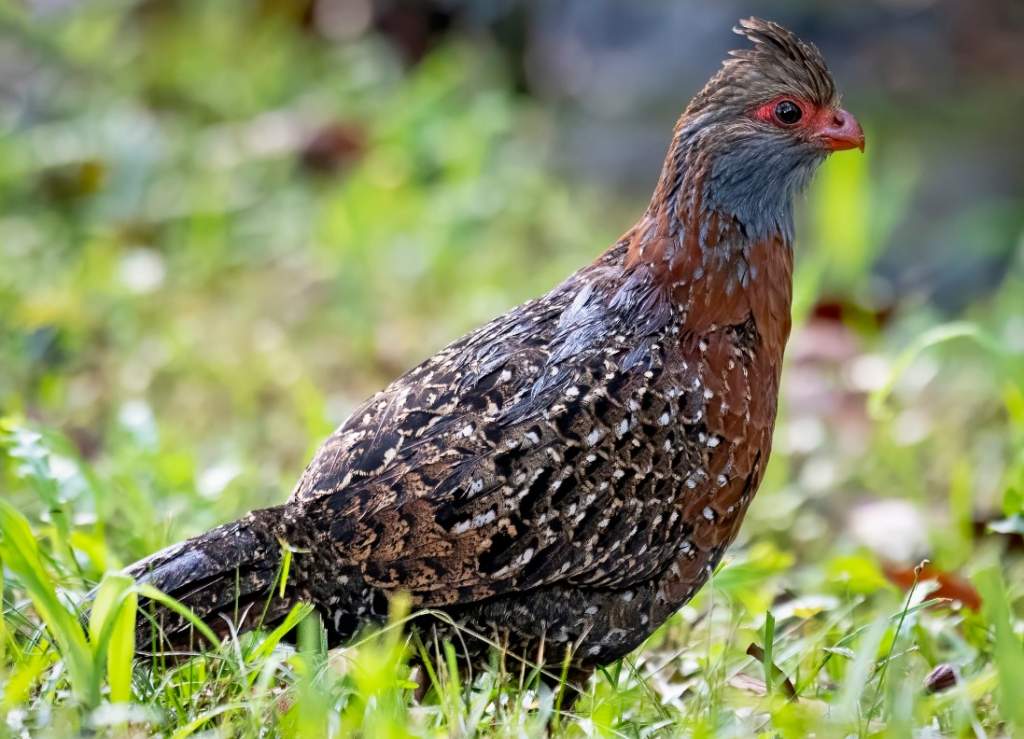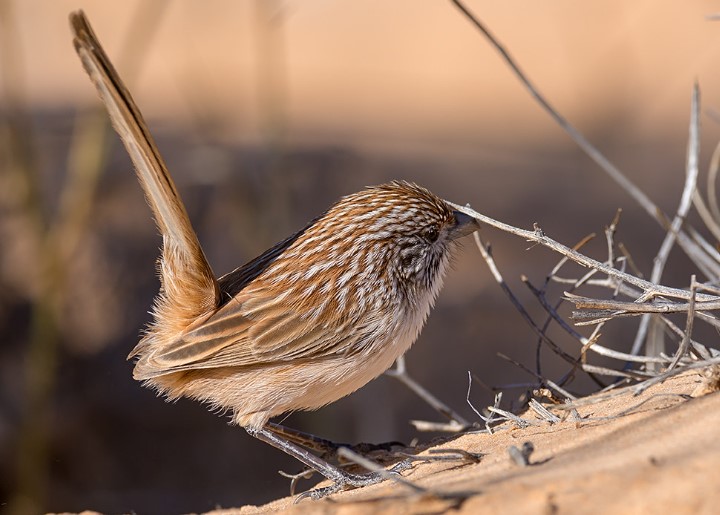FAMILY – Among the New World quails, the bearded wood partridge belongs to the family Odontophoridae.
PHYSICAL CHARACTERISTICS – With a length of 9 to 13 inches, this species is one of the largest. The males weigh approximately 16 ounces and the females weigh approximately 14 ounces. There is a small crest on the head of this bird. It has a grayish color. Those with red eyes, legs, and bills are most noticeable. Reddish brown is the predominant color on the body, with darker brown on the wings and rump.
DISTRIBUTION – From western Veracruz to the extreme northeast of Queretaro and the Sierra Madre Oriental, there are fragmented populations of bearded wood partridges in Mexico. Primary and secondary humid evergreen montane forests, as well as pine-oak forests, hold this species.
HABITAT – There are montane pine-oak forests, cloud forests, and older second-growth forests that contain them. Some agricultural land, forest edges, and shade trees are also associated with it. Especially in Veracruz, Mexico, most of the forest is highly fragmented. Queretaro’s recently discovered population lives in one of the most remote and intact forests in the world. Additionally, it can be found in gardens and on farmland. Riparian zones are often restricted to this species.
VOICE – Bearded wood partridges produce loud, rolling whistles, often in duet, that are repeated rapidly. Both sexes sing similarly, but the females are quieter. Dawn and dusk are usually when the song is sung. Its purpose is to maintain contact between members of a group.
BEHAVIOR – There is not much information available. The flocks of these quails form in the early morning and the chorus calls are quite raucous. Foraging on the ground is the norm for bearded wood partridges. There is a monogamous relationship between bearded wood partridges and their close relatives. Whenever males and females pair up, they behave aggressively toward one another.
FEEDING ECOLOGY AND DIET – A variety of seeds and fruits are known to be consumed by the species, but only limited information is available regarding its diet. A black bean, tuber, and insect are among the things the bird feeds on as a domestic crop. Bananas, grapes, beans, corn, and bananas are readily consumed by captive birds.
OTHER COMMON NAMES – Bearded partridge and Bearded tree-quail are other names for it.
REPRODUCTIVE BIOLOGY – Despite incomplete knowledge, it is believed that the breeding season occurs between April and June. A shallow depression in the ground was lined with palm leaves by captive birds when they constructed their nests. Nests are built by wild birds in shallow holes in the ground lined with palm leaves. In most cases, partridges only have one brood per year. There is a breeding season between April and June for bearded wood partridges. Approximately 18 days are required to incubate the eggs of bearded wood partridges. In 7 to 14 days, young chicks are often able to fly short distances, develop rapidly, and are precocial. There is no reusing of the nest.
CONSERVATION STATUS – Critically endangered status was assigned to this species until 1995. Further populations were discovered in remnant forests during surveys conducted in the late 1990s. It has now been downgraded to Vulnerable. It is, however, further threatened by rapid human population growth and agriculture that is encroaching on its habitat.
SIGNIFICANCE TO HUMANS – The species is not relevant to humans due to its limited distribution and population. In spite of this, even in the remaining populations, birds are still hunted for sport and trapped for food and cages. As a result of their depredations on black bean fields, local farmers poison them.
TAXONOMY – Dendrortyx barbatus Gould, 1846, Jalapa, Veracruz, Mexico. Monotypic.
Read More – Stubble Quail (Coturnix pectoralis)







